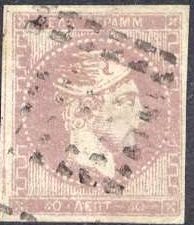
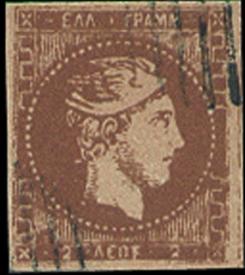
The face has a sad impression in this primitive forgery type. The line-cancel shown on the 2 l was never used in Greece.
Note: on my website many of the
pictures can not be seen! They are of course present in the cd's;
contact me if you want to purchase them: evert@klaseboer.com.
The genuine stamps should have 88 large pearls in the circle, all of the same size.
The book 'Die Postwertzeichen von Griechenland' by A.E.Glasewald (1896) mentions that the first badly done forgeries appeared in the 1870's. He is probably referring to the Spiro forgeries shown next.
Spiro forgery:


The face has a sad impression in this primitive forgery type. The
line-cancel shown on the 2 l was never used in Greece.
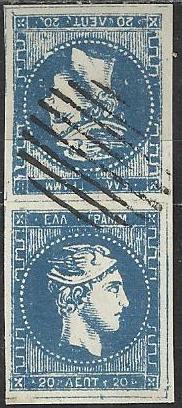
Even tete-beche forgeries exist of this type.
The above forgery has only 66 irregular small pearls in the circle. The face looks quite different from a genuine stamp. The background behind the circle is composed of straight lines, instead of wavy lines. This forgery is the second forgery described in Album Weeds. It was made by Spiro. I have seen a whole sheet (5x3) of the 40 l red values and another sheet with 25 stamps (5x5) of the 5 l green value. I've seen the 2 l in a much yellower shade of brown. This forgery appeared in the 1860's. It is usually cancelled with a pattern of lines or a square of dots.
Album Weeds describes another forgery with 75 pearls in the circle, which must be the next forgeries (also made by Spiro?):
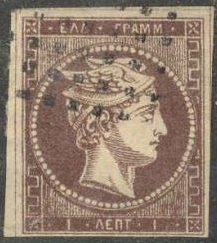

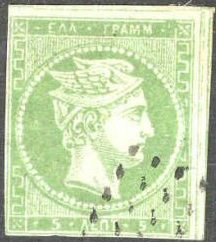

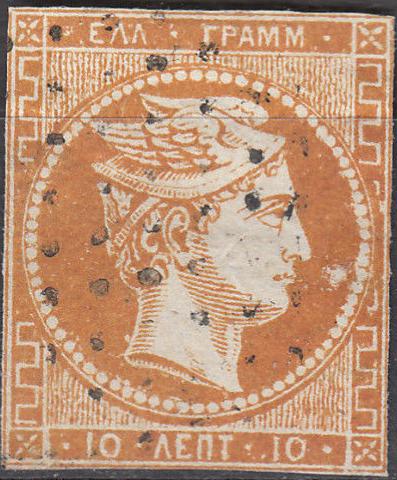
In my view, there is too much space between the circle and the
left outer frameline. The eyes are looking too much 'upwards'.
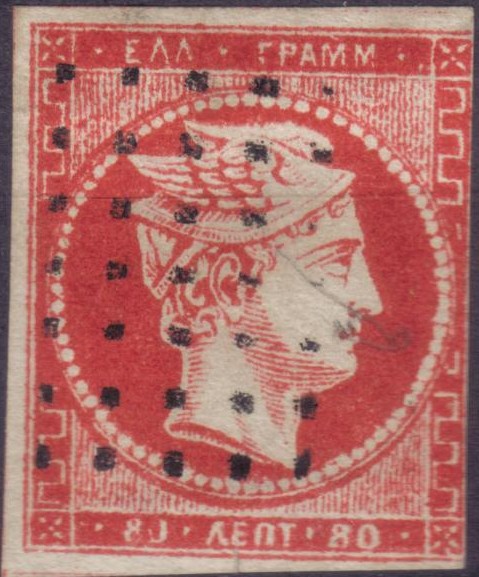
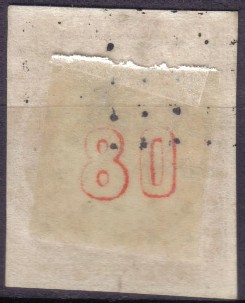
Front and backside of a 80 l forgery (Spiro?)
Other forgeries:
The first forgery (30 l) doesn't have any horizontal dots in the background outside the circle. Other forgeries:
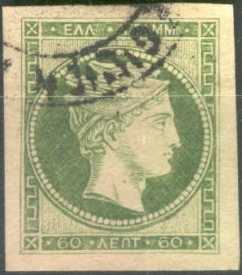
(look at the strange '60' in this forgery)
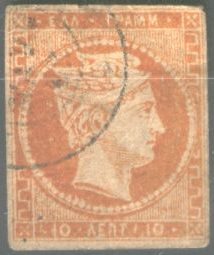


(Forgeries, the pearls are not uniformly done)
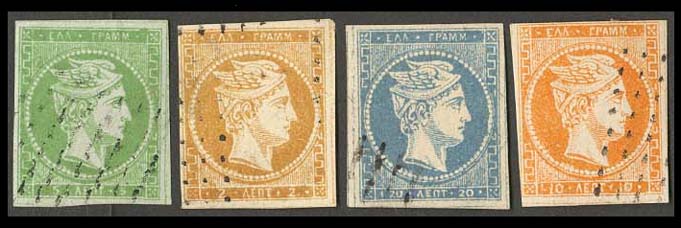
Some other primitive forgeries (many details are wrong upon closer inspection of these forgeries):

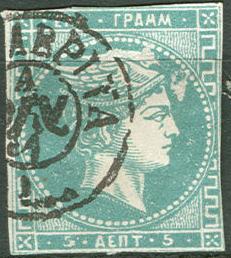
Some kind of cut from a postcard? I've seen another stamp with
the same cancel placed at the same location.
Some more sophisticated forgeries:

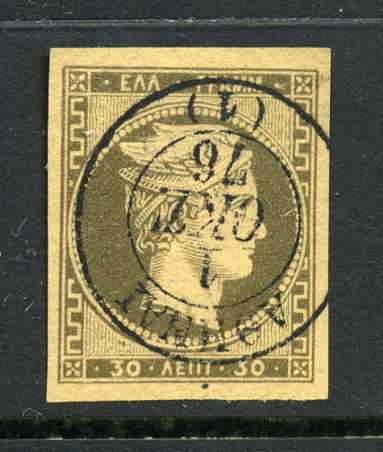

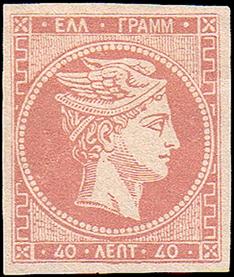
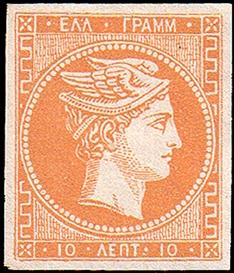
(I've been told that these are Fournier forgeries, I have no
further information)
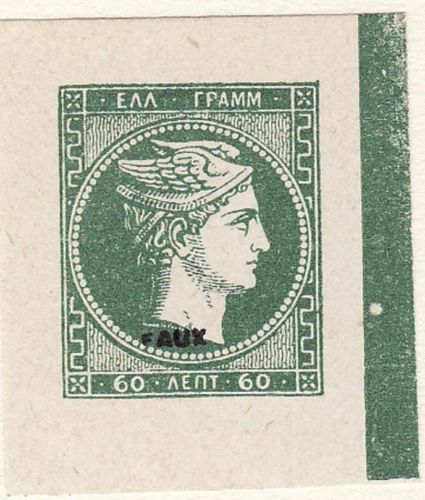
Most likely a Fournier forgery with 'FAUX' overprint.
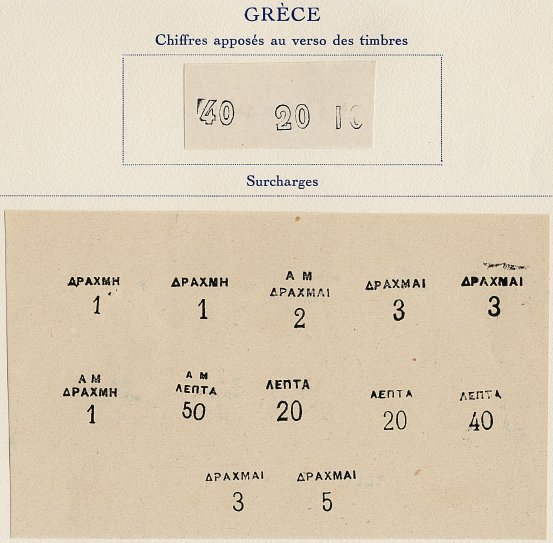
Some forged overprints as they can be found in 'The Fournier
Album of Philatelic Forgeries'

Fournier forgeries with forged cancels (reduced sizes). The first
Fournier forgery has the cancel 'PAEOI
1 NOEM 75 *', this cancel was often used by Fournier on these
forgeries. Other cancels were also used: 'PGOSTOLION 3 IOGL. 77
(110)', see 'The Fournier Album of Philatelic Forgeries'.
Possibly other cancels were also used.
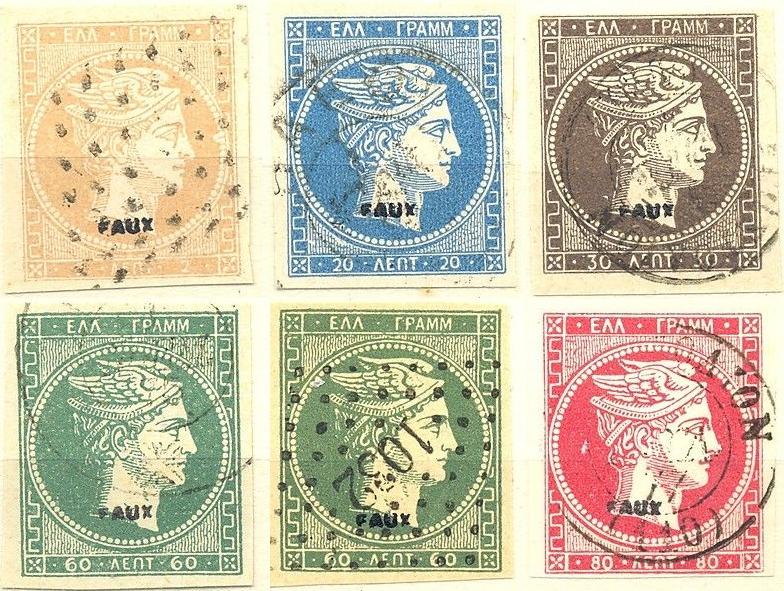
Fournier forgeries taken from a Fournier Album. The '1032'
numeral cancel of the 60 c value was also used for Fournier
forgeries of France.

Some forged Fournier cancels, obtained from a 'Fournier Album of
Philatelic Forgeries', the first cancel was used for Serbia.
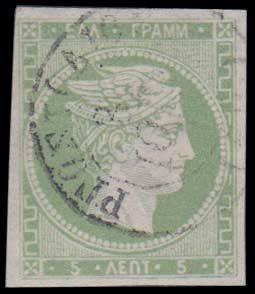
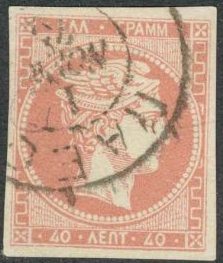
Fournier forgeries with the above shown cancels.
A die-proof forgery of the 20 l value made by Oneglia:
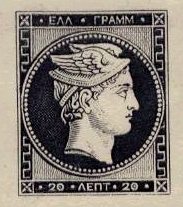
(Oneglia 'die proof' forgery)
Other Oneglia forgeries (made in 1890):
The above are Oneglia (Panelli) engraved forgeries. The 1861
'Paris' 1L, 2L, 5L, 10L, 20L, 40L & 80L values, then the 10L
with figure on reverse. Finally the 1876-77 30L & 60L (2,
both papers)
values (images obtained from a Sandafayre auction).


Sperati forgeries, images obtained from a Sotheby auction
The forger Sperati made a forgery of the 1 l value. Sometimes Sperati used genuine stamps of lower value on which he printed the forged design (in those cases the cancel is genuine). In other cases, he applied a forged numerical cancel '9', '18', or '32' (see images above or also http://en.wikipedia.org/wiki/File:LHH_-_Faux_de_Sp%C3%A9rati.jpg).
The forger A.Alisaffi (originally from Constantinopel, but working in Paris) also made forgeries of these stamps. He seems to have used many different dies (31 varieties according to V.E.Tyler's book); including prints in non-existing colors and double prints.
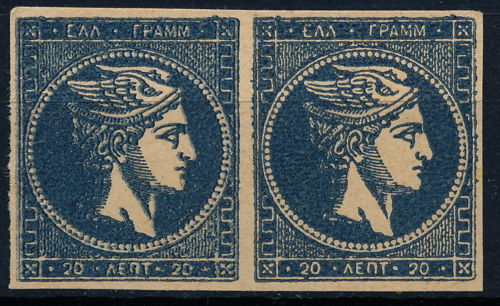
Most likely Alisaffi forgeries. They resemble very much the image
on http://en.wikipedia.org/wiki/File:LHH_-_Faux_d%27Alissafi.jpg
Imperato (Italian stamp forger) also made forgeries of these stamps (Genoa forgeries); See http://en.wikipedia.org/wiki/File:LHH_-_Faux_%27Imperato_(Faux_de_G%C3%A8nes).jpg for an image. I've been told that there are two types, A and B, I don't know the distinguishing characteristics.
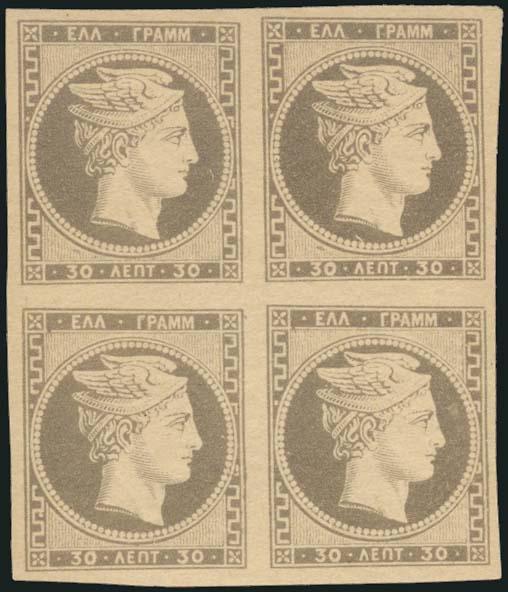
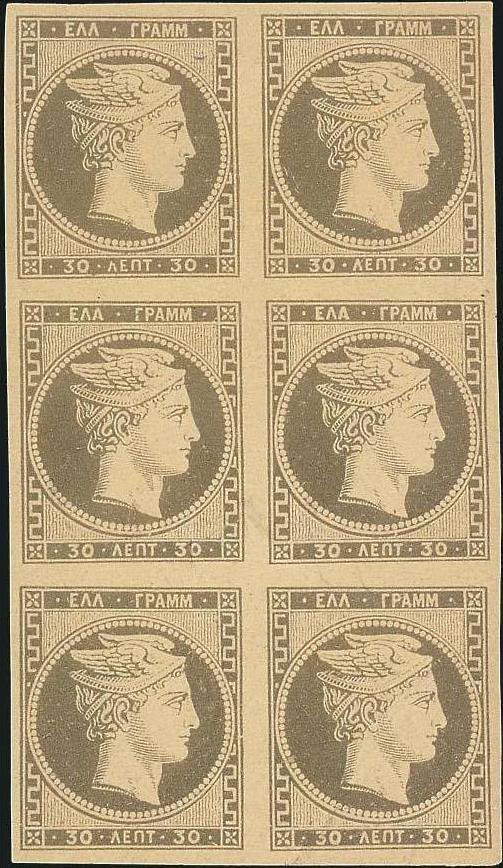
Each of the 5 rows in this 30 l forgery has its own
distinguishing characteristics. Row 1 has a scrath above the left
"30", Row 2 has a line connecting the upper left corner
to the lines below it. Row 3 has some smudges in the lower right
ornament. Row 4 has a break in the circle just above the
"T" of "LEPT". Row 5 has a tiny dot in the
lines to the left of the left "30".